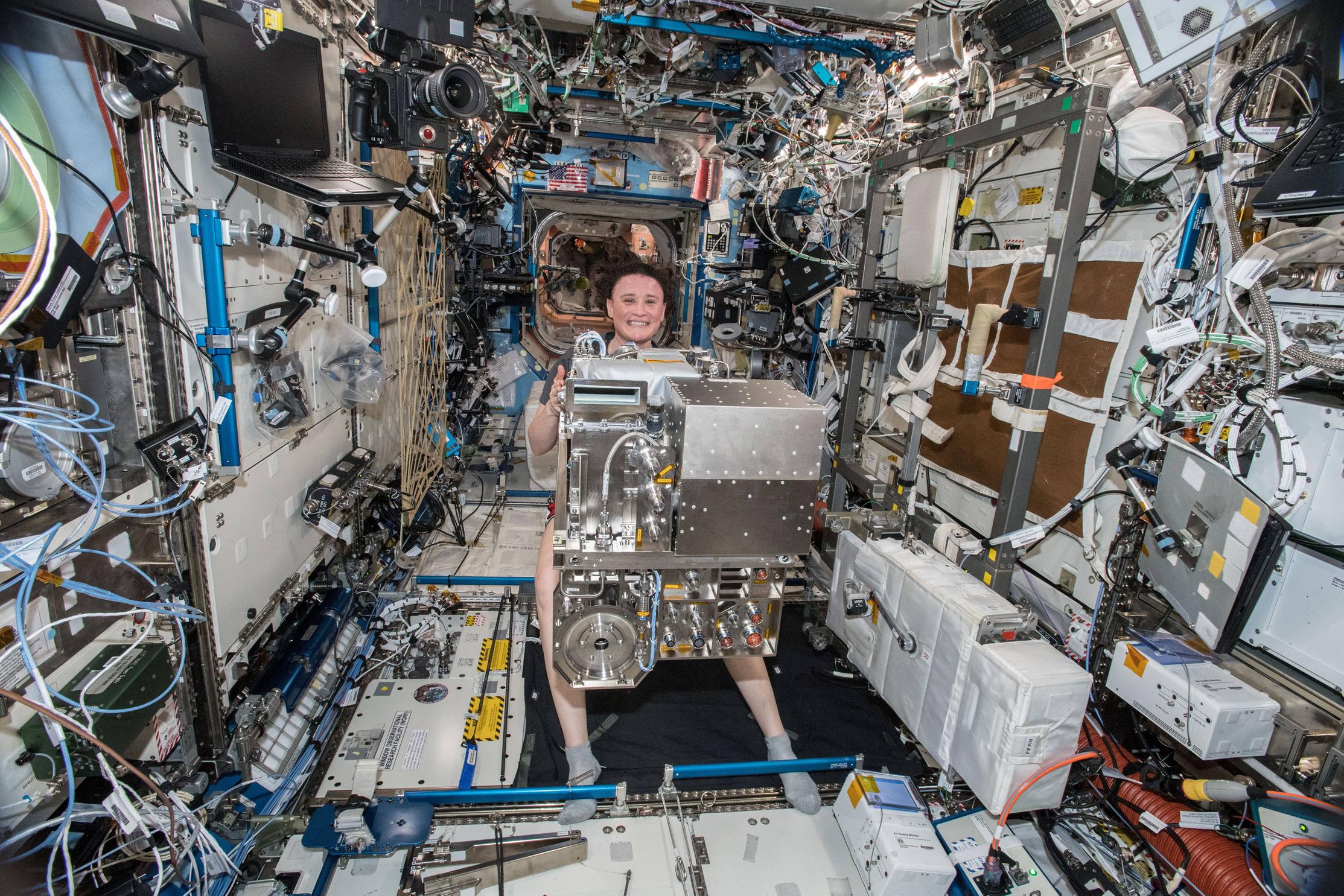
Cold Weather Research Laboratory, (CWR), the Army's cold climate research facility. It houses an electron microscope laboratory, a soils laboratory, a machine workshop, a building for ice drilling, a ballistics facility, wastewater treatment cells and an ice drill test facility. CWR conducts cold climate research to help the Army deal with extreme weather and icy weather conditions. Although many parts of the facility are classified by the government, the core mission is the same: to protect soldiers.
Data center
The U.S. Army Corps of Engineers created the first data center of its kind. The design required highly redundant, scalable and energy-efficient equipment. The CRREL campus property was used to build the new facility. The data center is designed to support both internal operations and external operations, ensuring a smooth transition for the mission-critical services. The new facility is designed to comply with strict energy efficiency standards. It has a 96 zone power system which is the lowest power consumption in the world.
From three pre-existing organizations, Cold Regions Research and Engineering Laboratory were created in 1971. This center provides scientific and engineering support to the U.S. government. It also offers technical support for non-governmental customers. The Cold Regions Research and Engineering Laboratory currently hosts over 20 million files on a variety of topics. This is where we will explore the Cold Regions Data Center mission. Let's find out more about CRREL.
Research facility
CRL, the University of California Berkeley Research Facility, is an important component of University of California Berkeley. Its mission is to foster research in the field of language and communication by bringing together faculty, students and research associates to study various aspects of the process. This includes research on the brain and the way it processes language. It also involves the processing and analysis of other body fluids. Researchers can do a range of experiments in this area that are not possible elsewhere.
CRL has two laboratories. The one lab is for small artifacts. While the other is equipped to handle large iron artifacts as well as multi-year projects, it is also equipped with the second laboratory. The Archaeological Analytical Laboratory is a third lab that was recently added to the existing two. In addition to storing thousands of artifacts, it provides detailed analysis. While the research facilities at CRL are highly specialized, the work performed by the labs will be of great assistance to scholarly institutions.
Drill for thermal coring

USA CRREL thermal Coring Drill is a continuous-core drilling device that uses the ring-shaped heating element. A suspended cable runs to the heating element, melting the ice. The core of the ice is left by the thermal drill, which melts its annulus. Drilling speeds vary from 1.9 m/h-1 in -28degC and 2.3 m/h-1 in temperate.
The thermoplastic material used to construct thermal coring holes is not the only one that can be melted. Many other types of thermal coring drills have been developed independently. The following bibliography includes papers on thermal drilling drills. A thermal coring drill can be used in an RC framework to create a more precise model. This is why thermal coring drills are frequently used in RC drilling applications.
The tower measures 6.7m and has three sections. Two of the sections can be used to ship the drill. A single frame supports the drive motor and a cable drum. On the tower, a depth counter is mounted. A mechanically operated cable drum and flexible shaft allow it to drill deep holes. Cables are used to suspend the cable drum. The cable drum is connected to the drive unit by a flexible shaft at the top of tower.
Safety

CRREL, or Cold Regions Research and Engineering Laboratory is a place to train oil-spill responders. This facility is located in Prudhoe, Alaska and was used to train oil spill response personnel by Alaska Clean Seas. CRREL, Geophysical Research Basin provides training for oil spill responders. They are able to practice recovering crude oil spillages in this harsh environment.
The CRREL facility represents a significant investment in U.S. Army's research into extreme environments. Cold Regions Research and Engineering Laboratory, located in Hanover (New Hampshire), conducts research all across Alaska. The center will also act as a Material Evaluation Facility. This is where Army field material can be validated, improved, and improved. This is vital to ensure Soldier readiness. It is also a vital source for critical equipment for Army operations.
FAQ
Engineering: What is it?
Engineering can be described as the application and production of useful things using scientific principles. Engineers use their science and math knowledge to design and build machines, vehicles and bridges, aircraft, spacecraft, robots and tools. They also create electronic circuits and other devices.
Engineers could be involved in research and design, production, maintenance or testing, quality control and sales, marketing, management and teaching.
A variety of responsibilities are available to an engineer, such as designing and building products, processes, and systems; managing projects; performing tests, inspections; analysing data; creating models; writing specifications and standards; supervising employees; and making decisions.
Engineers can specialize in certain fields, such as mechanical, electrical, chemical, civil, architectural, computer, biomedical, manufacturing, construction, aerospace, automotive, nuclear, petroleum, mining, forestry, geology, oceanography, environmental, and more.
Some engineers prefer to specialize in a particular type of engineering.
What degree do I need to become an engineer?"
To become an engineer, you don't need to have a bachelors degree. However, many employers prefer applicants with degrees. You can also take classes online if you don't already have a degree.
How long does it take for an engineer to become?
There are many ways to get into engineering. Some people decide to start learning immediately after finishing high school. Other people go to college later.
Some students will be able to start a degree right after high school. While others will go on to a two year foundation degree program.
After completing this, they might continue onto a three or four-year honors degree. You could also opt for a masters degree.
When choosing which route to follow, you should consider what you want to do once you graduate. Are you going to be a teacher or a worker in the industry?
It can take you a while to complete each stage, depending on whether you are enrolled at a university or not.
But it's important that you remember that experience and how long it took you to get a particular qualification don't always have a direct correlation. Even if you spend only one year in college, that doesn't necessarily mean you will have the necessary skills to become an engineer.
What is a typical day in life of an engineer?
Engineers spend a lot time working on different projects. These projects might include improving existing products or developing new ones.
They may be involved in research that aims to improve the environment.
They might also be involved in developing new technologies such smartphones, computers, planes, rockets and other mobile devices.
To complete these tasks, engineers have to use their creativity and imagination. Engineers must think outside of the box to find innovative solutions to problems.
They will be required to sit down with their ideas and develop them. They will also have to test their ideas and prototypes using tools such as 3D printers, laser cutters, CNC machines, computer-aided design software, and other equipment.
Engineers must also communicate effectively in order to present their ideas to others. They need to write reports and presentations so that they can share their findings and ideas with clients and colleagues.
They must also manage their time effectively in order to complete the tasks within the time allowed.
No matter the type of engineering, you need to be creative and imaginative as well as analytical and organized.
Statistics
- 2021 median salary:$95,300 Typical required education: Bachelor's degree in mechanical engineering Job growth outlook through 2030: 7% Mechanical engineers design, build and develop mechanical and thermal sensing devices, such as engines, tools, and machines. (snhu.edu)
- 14% of Industrial engineers design systems that combine workers, machines, and more to create a product or service to eliminate wastefulness in production processes, according to BLS efficiently. (snhu.edu)
External Links
How To
Engineer salaries in America
The US average engineer salary per year is $100k. This includes both base pay and bonuses as well as benefits.
In May 2014, the median annual salary for all workers was $50,000.
This is an improvement of $48,671 in 2013.
Software Developer ($65,000), Computer Programmer $60,000, and Systems Analyst ($55,000 were the most commonly used job titles.
The salary ranges depend on where you live. New York City salaries range from $80,000 to $120,000
Engineers living in San Francisco will earn $90,000-$150,000.
Washington DC residents can expect to make between $85,000 and $130,000.